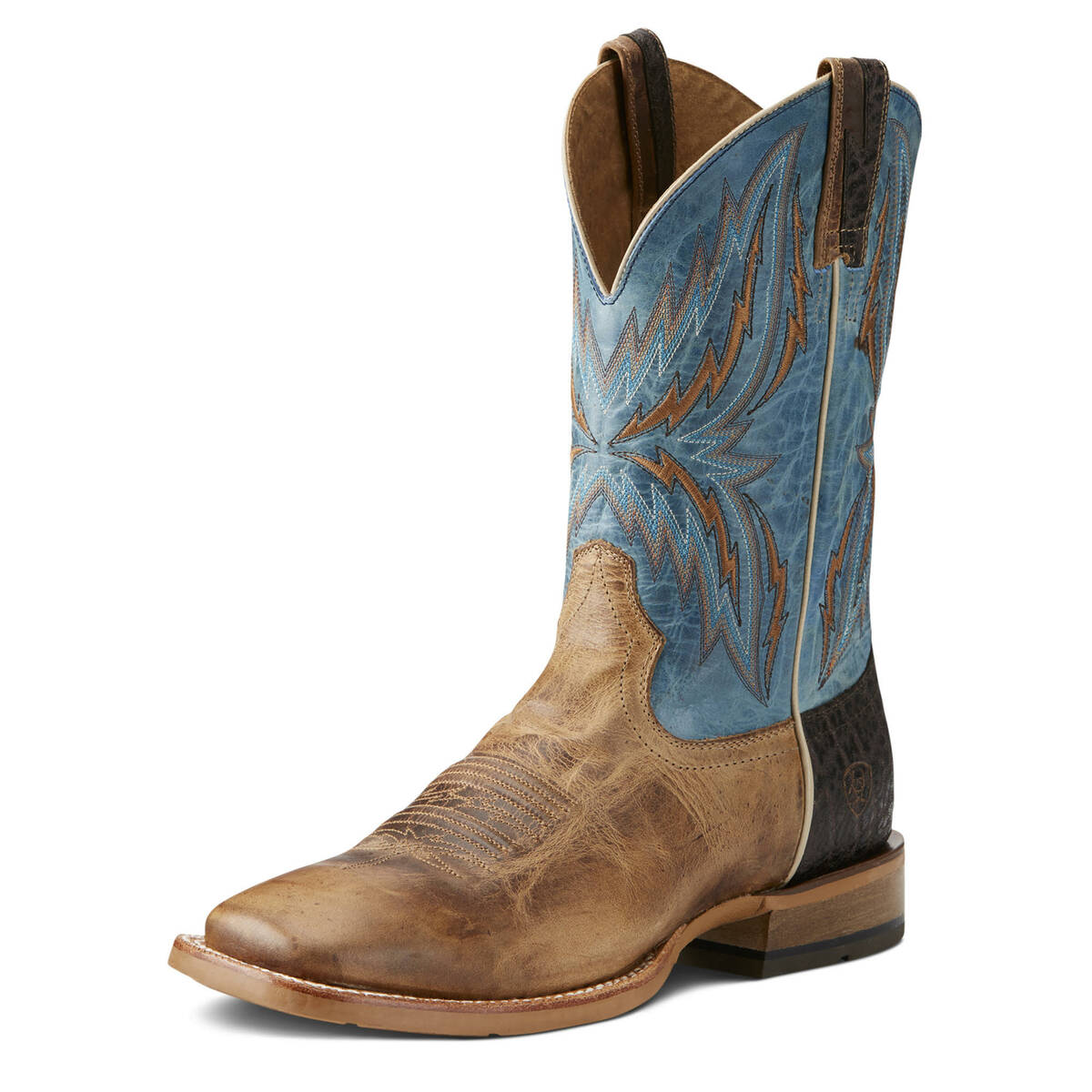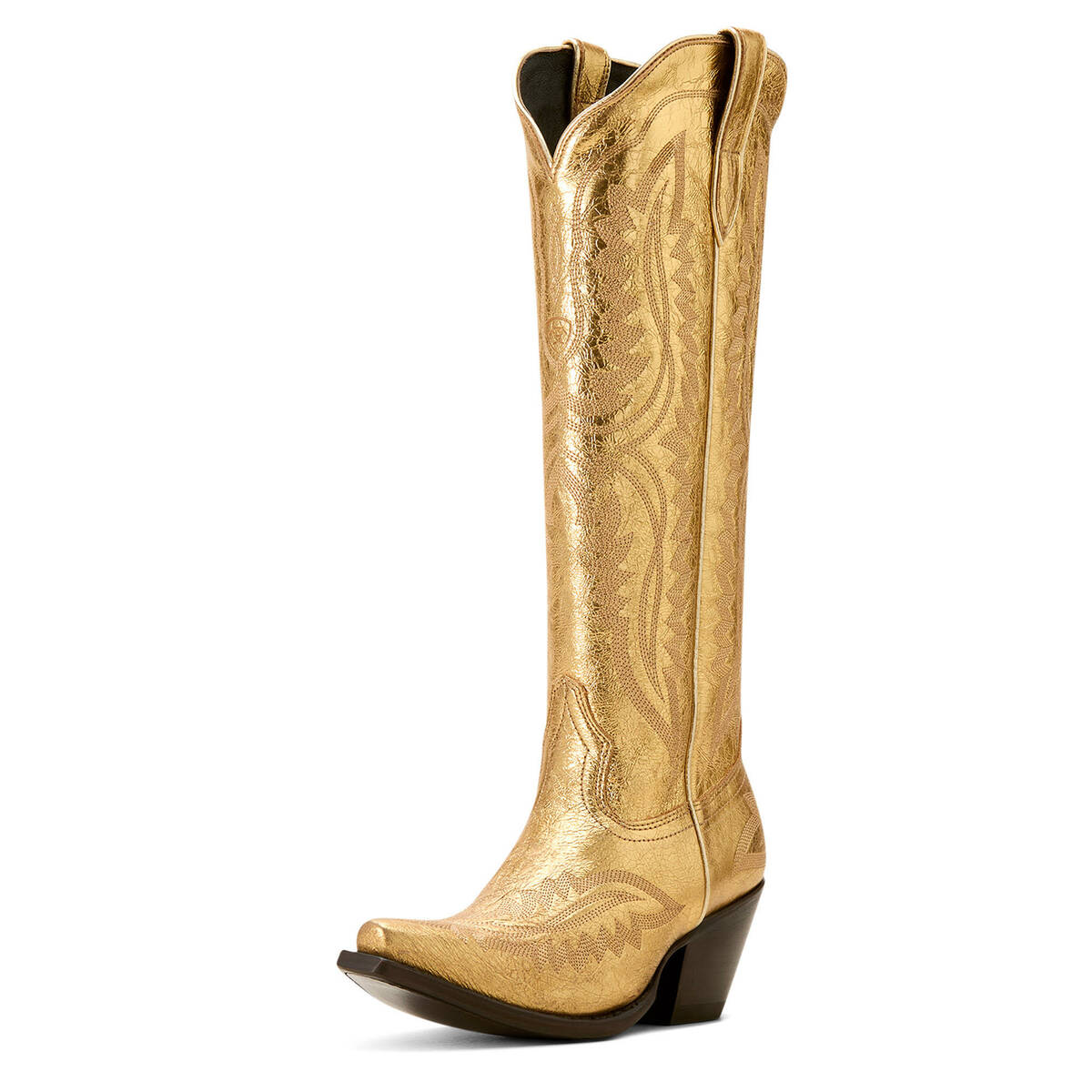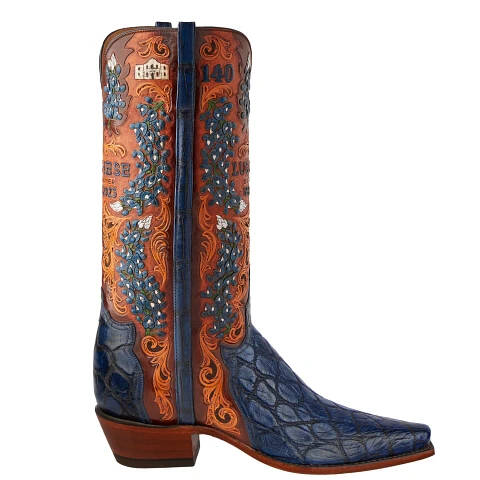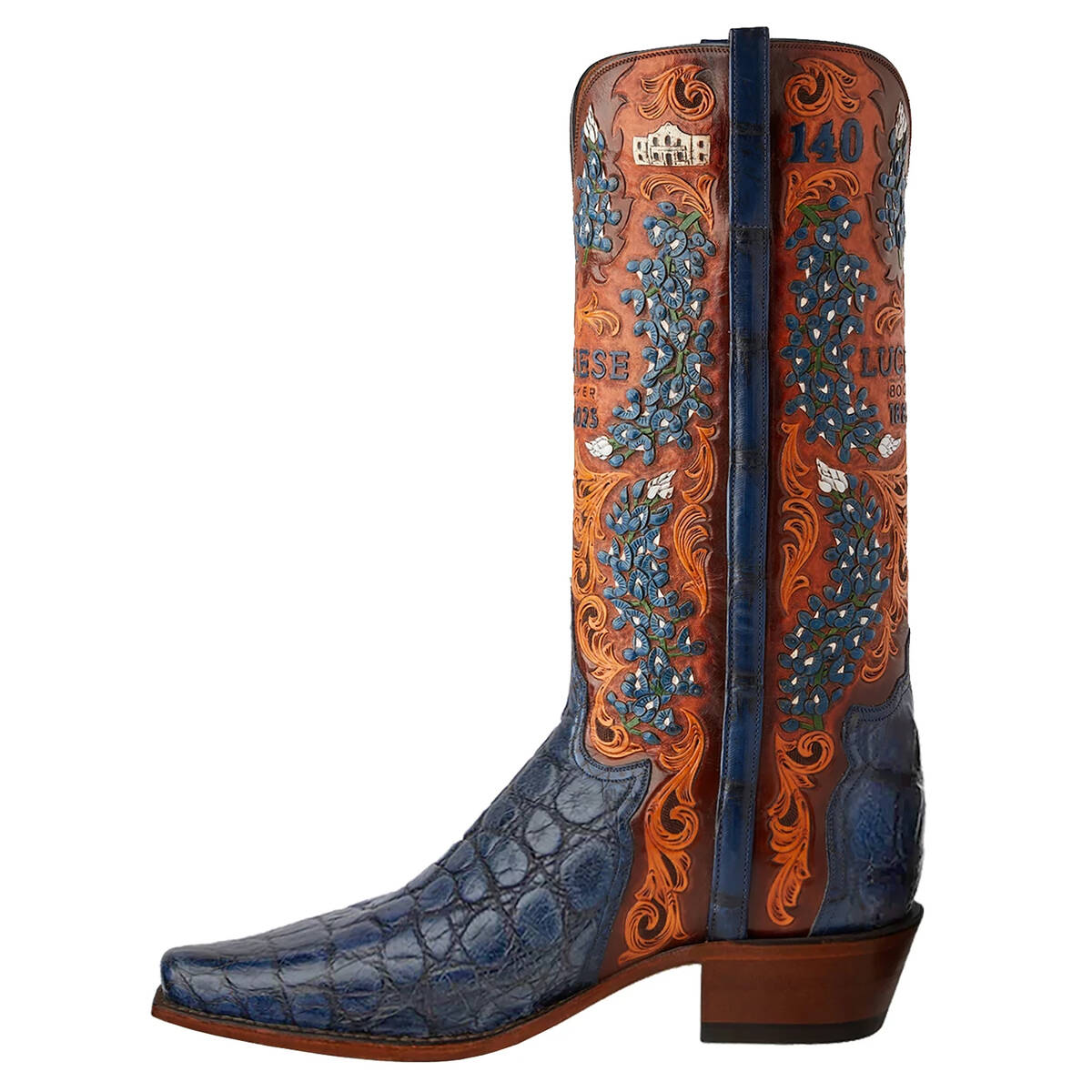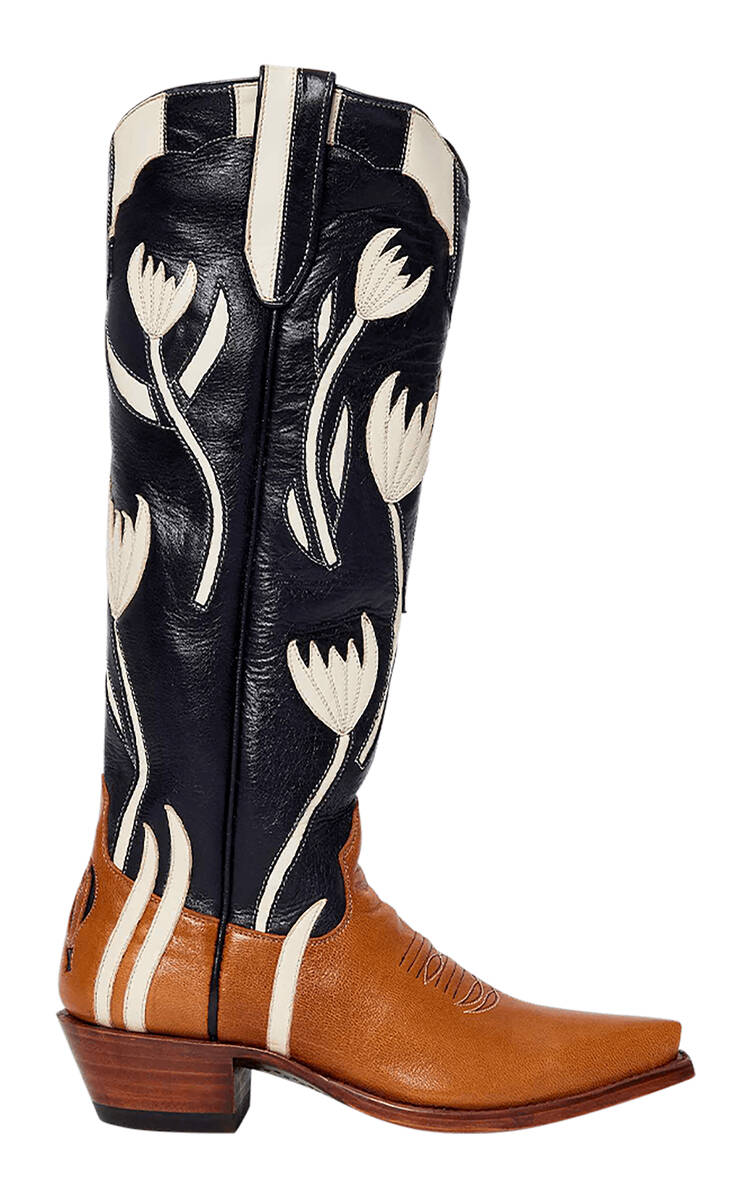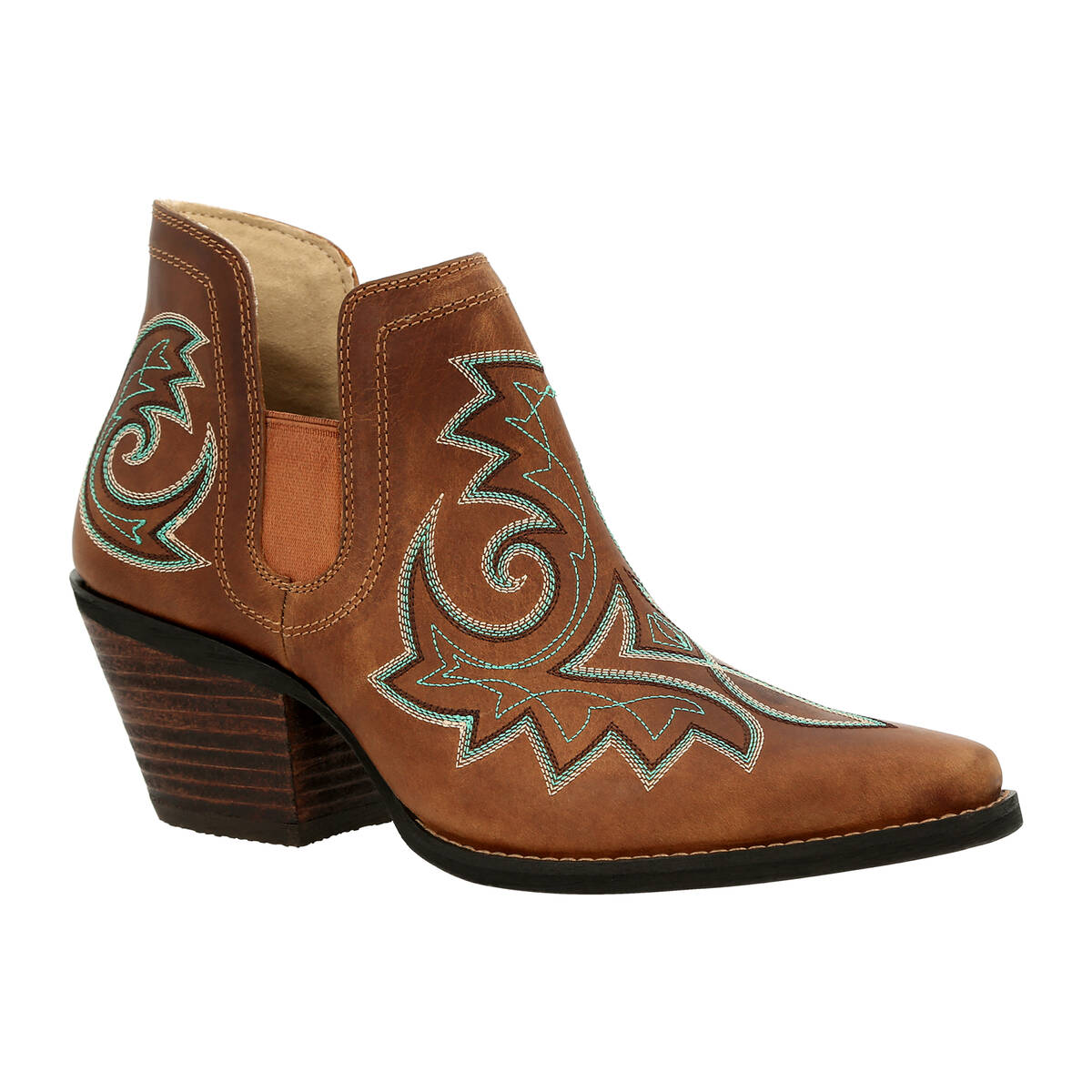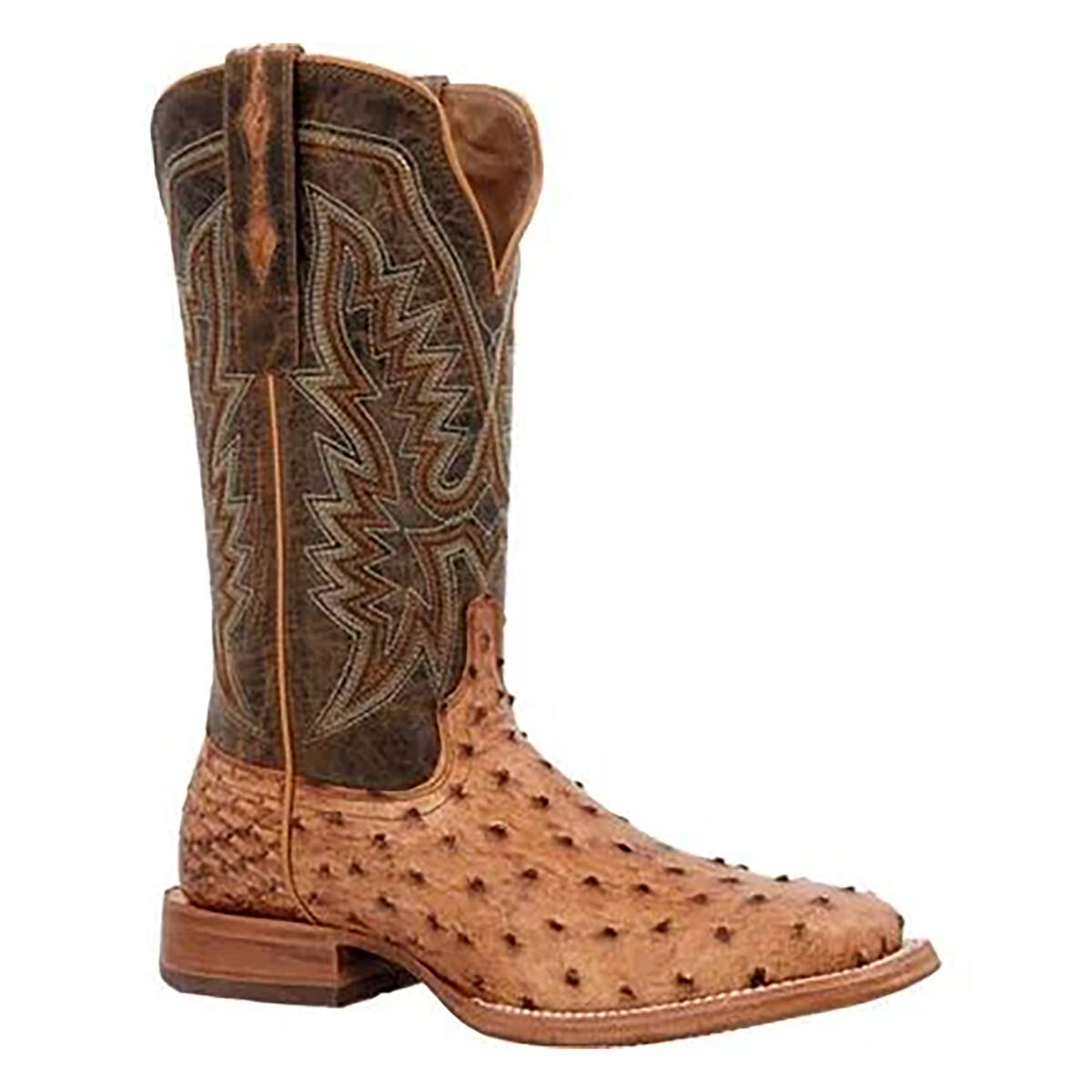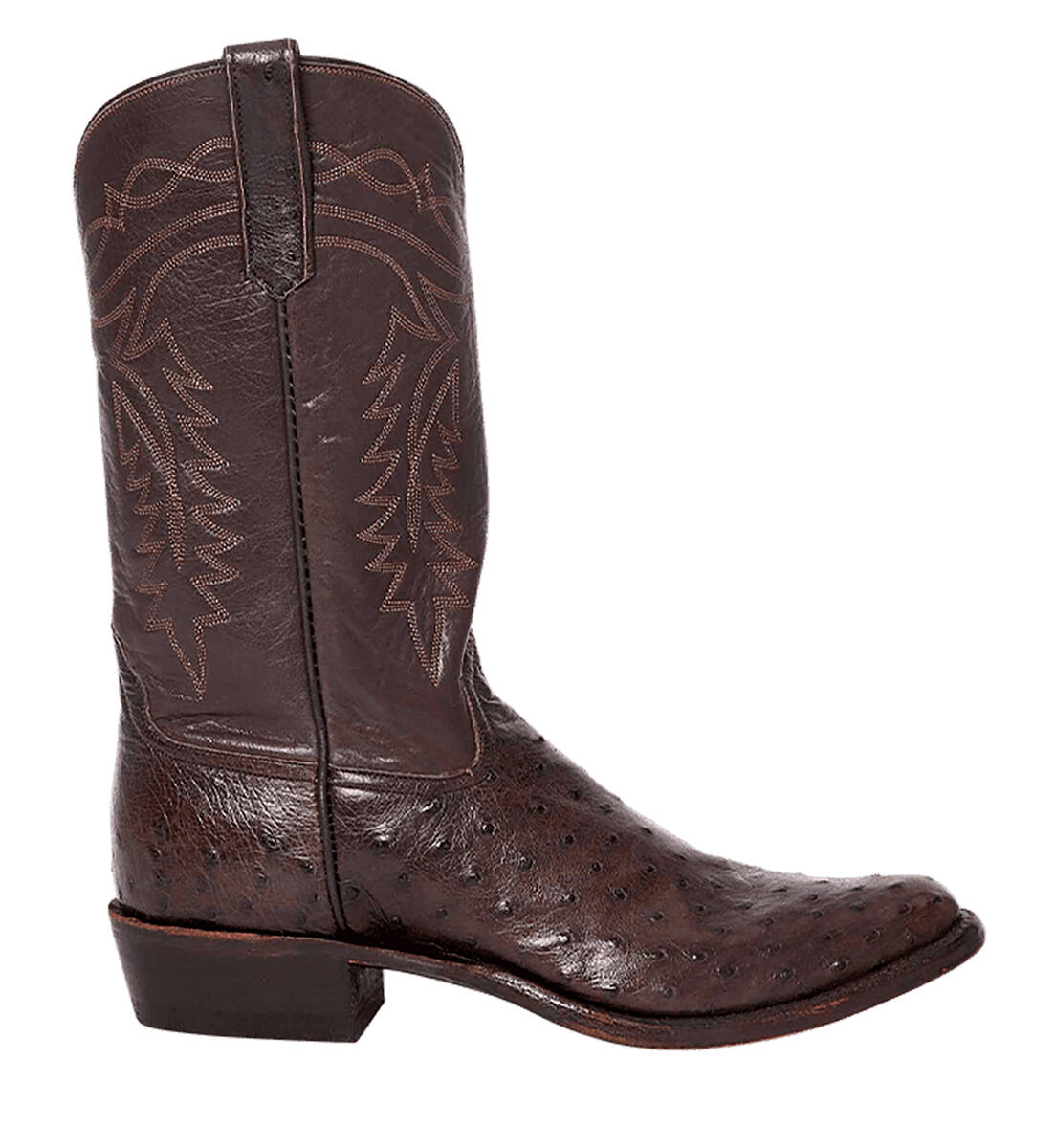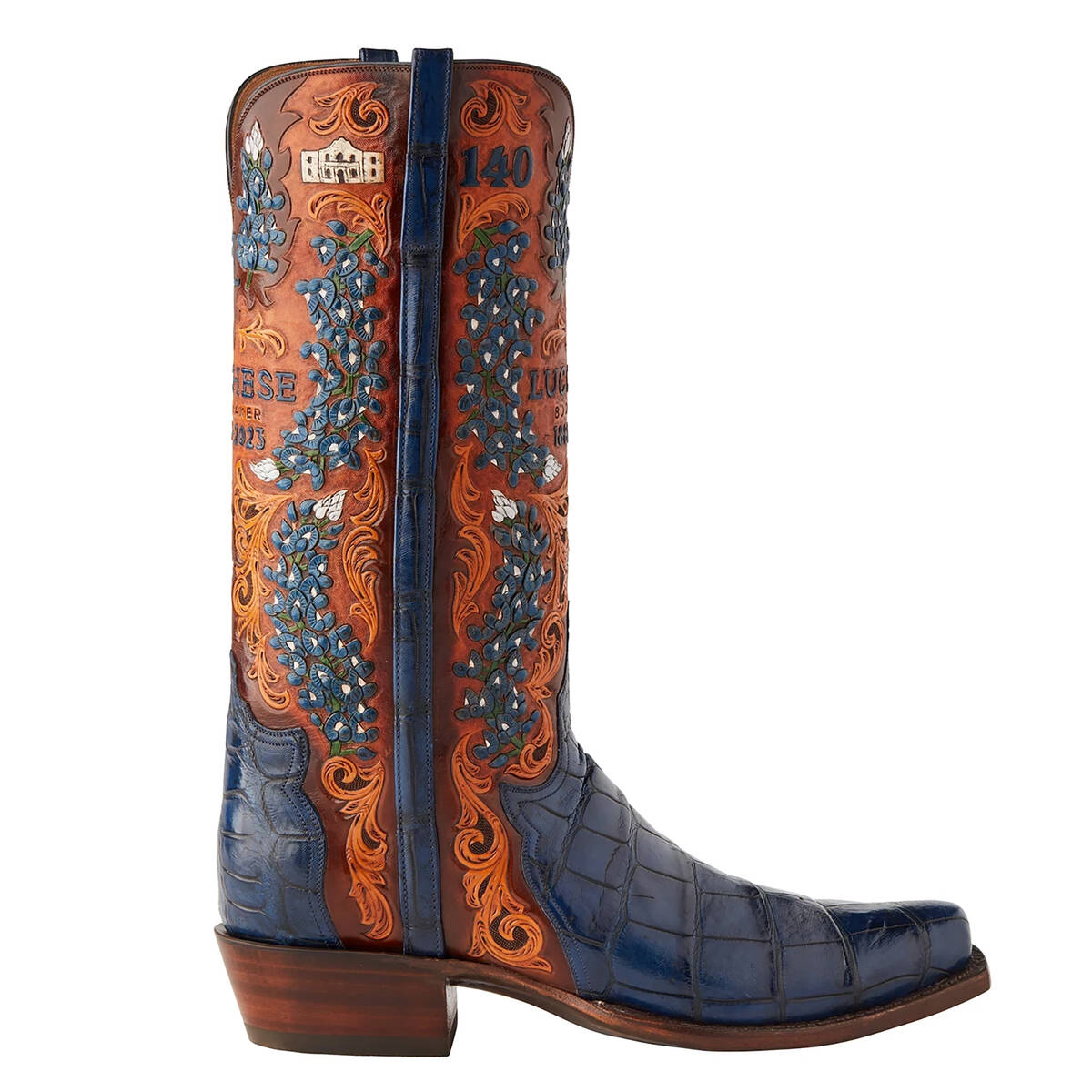Cowboy boots embody American West: heart and sole
Cowboy boots epitomize America’s approach to style.
From the flat rubber-soled option yanked on in the predawn hours of a long shift to the couture-adjacent styles headed to a televised red carpet, the origins of cowboy boots “are incredibly practical,” says Deirdre Clemente, the associate director of UNLV’s public history program.
With its arched and slanted heel and “thick, somewhat unforgiving leather initially intended to protect shins, the Western-style boot still holds true to much of its original silhouette,” according to Footwear News, the industry outlet.
Today, cowboy boots are the totem of authenticity grounding contestants and fans at the National Finals Rodeo. Or they may be the steadying support a bride and groom need during their ceremony.
Like duct tape and microwave ovens, cowboy boots most directly trace their first steps to a military application — the unlined leather boots worn by the U.S. Cavalry after the Civil War. But, according to experts, the practical demands of days spent in the saddle working with cattle on rough territory required adjustments for civilian adoption.
The cowboy boot most likely originated in Kansas in the 1880s, when a cowboy asked cobbler C.H. Hyer of Olathe to make him custom boots for cattle driving, according to boot experts and the Hyer website, where current men’s bestsellers range from $320 to $380. By the final decades of the 19th century, cowboys and those entranced by them thanks to the proliferation of Wild West shows that romanticized the cowboy life, were pulling on what we know as a cowboy boot.
“They were born of an actual purpose … then evolved to be practical, durable and fashionable,” said Clemente, a historian and curator of 20th century American culture, specializing in fashion and clothing. “They were born of the same parents as jeans and are part of the egalitarian element of the American West.”
Custom bootmaker Lisa Sorrell of Guthrie, Oklahoma, embraces all the boots, from those worn by working cowboys to the aspirational lifestyle ones pulled on by fans of movies such as “Urban Cowboy” and TV shows such as “Yellowstone.” Even the versions from designers Ralph Lauren, whose branding embraces Western influences, and Christian Louboutin, he of red-soled status footwear, work for Sorrell.
While Sorrell would like people to learn more about the culture and history of the West, she believes that “anything that brings attention to cowboy boots is a good thing.”
“Some cowboys feel it is cultural appropriation, but I don’t,” says Sorrell, the author of “The Art of Leather Inlay and Overlay,” a 2016 book detailing the techniques associated with the cowboy boots. (Inlay involved cutting out the shape of, say a flower, and putting another piece of leather behind the cutout. Overlay creates the design by stitching down on the leather.)
Clemente says immigration patterns influenced the U.S. industry: “Follow who has the skill set” for bootmaking, a notoriously complicated process that drew Italians and Mexicans already adept at making leather footwear.
From “The Great Train Robbery,” recognized as the first Western movie made in the U.S. (in New York City and New Jersey) in 1903 to the emergence of Western swing in the 1920s and the singing cowboys who became movie stars in the next decade, the West colored popular culture. By the 1940s, a dude ranch was among the most envied vacation options, according to Sorrell, who adds that, as TVs became commonplace in the 1950s, another generation grew up thinking “Western stuff was cool.”
Those decades of media exposure are part of why cowboy boots “are available to everyone to use as they want to express themselves,” Clemente says. How that happens often depends on budget. There are discontinued Crocs classic cowboy boots from 2023 on eBay and vegan boots online for under $100. It’s possible to find a coveted pair of vintage boots for $20 at a yard sale like Clemente did recently. Or to find a new pair on sale at retail for well under $150. It’s also possible to spend more than 100 times that on fully handmade custom boots depending on the exotic skins and designs.
Randy Steele, a boot historian with decades of experience in the industry, like Clemente and Sorrell, sees cowboy boots as part of immigrants’ manifestation of the American Dream.
Salvatore and Joseph Lucchese, sons of a shoemaker, arrived in Galveston, Texas, from Palermo, Italy, in 1882. The next year, the brothers moved to set up a boot-making shop at Fort Sam Houston, a U.S. Cavalry School in San Antonio. Today the company makes boots for you, captains of industry and world leaders.
Steele contends “boots tell our stories.”
Not too long ago, Steele spotted a man wearing rattlesnake-skin boots at a convenience store. Steele remarked on the boots, and the man told him, “These belonged to my brother, who died last year. The man said he ‘would wear them for the rest of my life as a tribute to my brother’s life.’ ”
Steele said, “I’ve never heard of anyone who held up a pair of brogues saying, ‘My dad wore these to the accounting office.’ ” ◆




